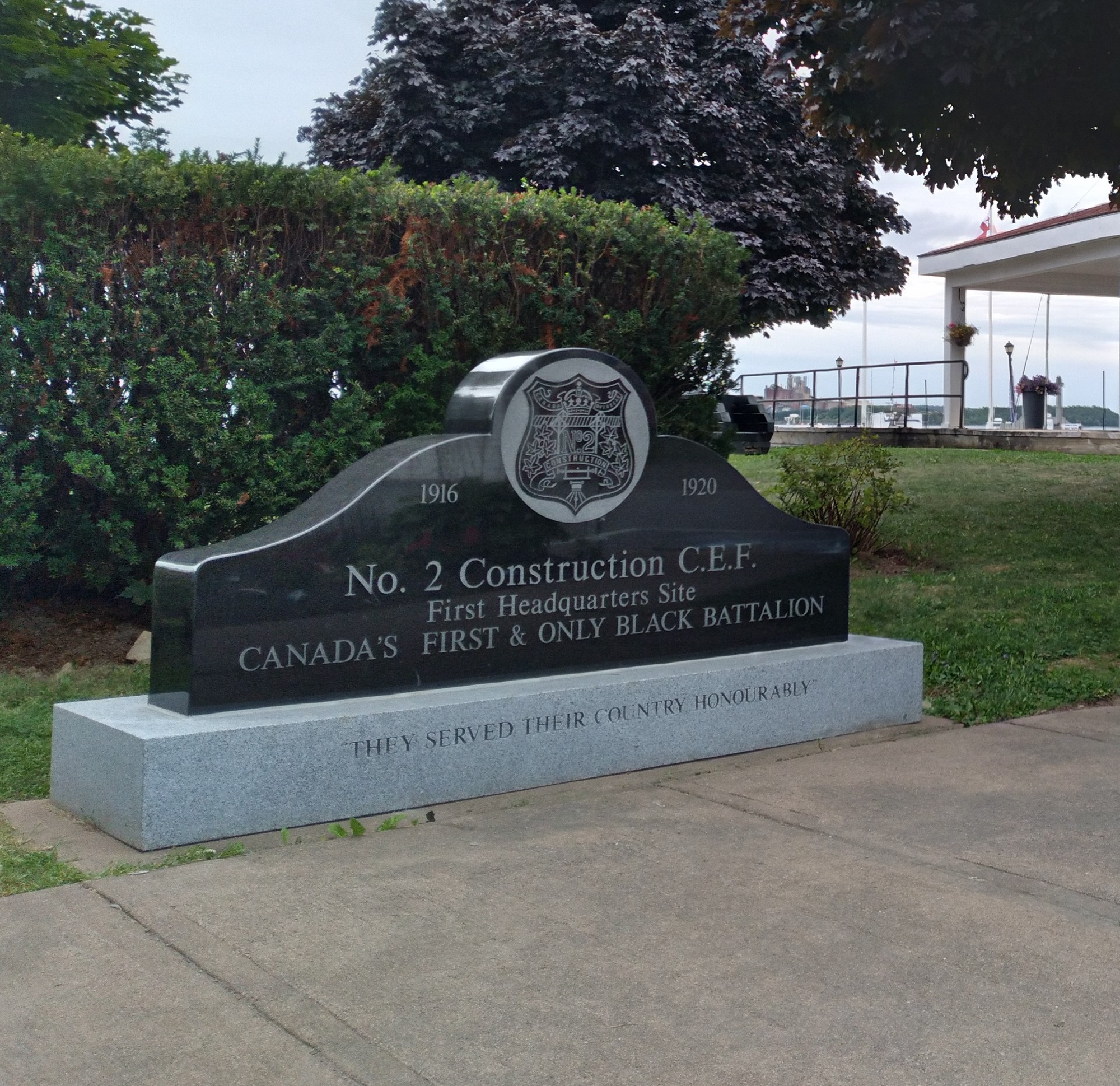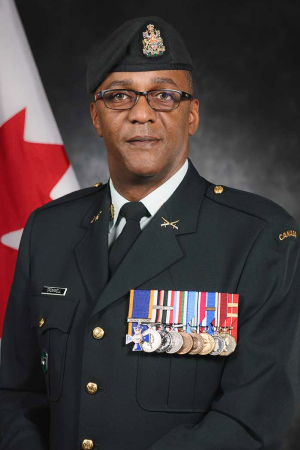
This issue of the Golden Oldies recognizes the outstanding contributions and adversary to overcome great challenges just to enlist in the military from Black Canadian Soliders. Together we recognize and appreciate the sacrifices and achievements of Black Canadians over the years. The information was shared from Verteran Affairs Canada Website
Able-Seaman William Neilson Edward Hall
William Neilson Edward Hall was born in Horton’s Bluff, Nova Scotia, on April 28, 1827, the son of free Black slaves, rescued from slavery by a British frigate during the War of 1812. Hall attended the local school, then worked in the shipyards of Hantsport for several years, involved in the construction of wooden ships for the merchant marine. Before he was even eighteen years old, he had already been to some of the most important ports in the world, having joined the crew of a trading vessel.
In 1852, he left a promising career in the American merchant navy to enlist in the British Royal Navy. He served as Able Seaman on board HMS Rodney during the Crimean War, and was awarded the Turkish Crimea medal, as well as the British Crimea medal with the “Sevastopol” and “Inkerman” clasps. He was a member of the Naval Brigade, and assisted the ground forces by manning heavy guns.
Before the Indian Mutiny of 1857-8, he was appointed to “Captain of the Foretop” on board HMS Shannon. As the ship was on its way to China, in anticipation of a Chinese insurrection, it received orders to turn around and head to Calcutta (now Kolkata), India. Hall and a brigade of soldiers were to head for Lucknow, to relieve the British garrison which was under siege. He was the 3rd Canadian to receive the Victoria Cross and the first black recipient.
No. 2 Construction Battalion
On July 5, 1916, No. 2 Construction Battalion was formed in Pictou, Nova Scotia—the largest Black military unit in Canadian history. Recruitment took place across the country and approximately 800 personnel would serve with the battalion at some point during the war. Most were from Nova Scotia, with others coming from New Brunswick, Ontario, the West and even some from the United States. The Black Battalion’s chaplain was Reverend William White, who had also played a leading role getting the unit formed. He was given the rank of Honourary Captain—one of the few Black commissioned officers to serve in the Canadian Army during the war.
No. 2 Construction Battalion marching band in Truro, Nova Scotia in 1916. Photo: Maritime Command Museum
Welsford Daniels in England, 1943
Daniels was employed as an instrument mechanic and he was no stranger to the horrors of war. His service eventually took him to France during the Normandy Campaign. Under the cover of night, he arrived on Juno Beach with his motorcycle where he recalled being caught up in the bombings and being forced to hide behind a truck for his safety. After moving inland from the coast he often rode by motorcycle from communication headquarters to the front lines. To avoid detection from the enemy he often had to travel and work at night. Sometimes when visibility was low, Daniels would hear noises coming from bushes that he motorcycled past. Although he suspected they were wounded soldiers, Daniels was unable to deviate from his important missions to investigate any of the noises he heard. Daniels survived the initial horrors of the Normandy Campaign and, along with many other Canadian soldiers, went on to participate in the liberation of the Netherlands from Nazi occupation. He was honourably discharged from the military in 1946. (Credit: The Memory Project).
Major Retired S.V.A. Blizzard CD
On June 22, 2023, Major (Retired) Stephen Blizzard CD was inducted into the Canadian Medical Hall of Fame (CMHF) during the annual Laureate Induction Ceremony in Halifax, Nova Scotia. Doctor Blizzard’s alma mater, the University of Western Ontario (Schulich School of Medicine) nominated him with support from Canadian Forces Health Services. Dr. Blizzard’s induction into the CMHF is based on his leadership in Aerospace Medicine and his unique achievements as a CAF physician-pilot.
A first-generation Black Canadian, Dr. Blizzard overcame systemic racism to become a pilot, physician, and decorated peacekeeper. He is forever remembered as a courageous trailblazer who demonstrated leadership in adversity and a commitment to excellence in all he did.
Major Wally Peters flew with the Snowbirds, the Canadian Armed Forces’ precision flying team in the early 1980s.
“Obstacles are the stepping stones on the pathways to achievements. Lofty goals are the key to success.”
For Major Walter “Wally” Peters, these words served as a reminder that hurdles are not insurmountable. Peters faced many hurdles, persecution, and racism in his 76 years, including throughout his career in the Royal Canadian Air Force (RCAF).
Born on January 22, 1937, Peters grew up in both Nova Scotia and New Brunswick. He was a gifted athlete and earned an athletic scholarship to Mount Allison University in Sackville, NB. His presence on the university campus proved to be controversial, and some of his classmates would refuse to room with him in residence because he was Black. He graduated in 1959.
In 1961, at the of age 24 — the upper end of the age limit for pilot recruitment at the time — Peters came across a recruitment flyer and joined the RCAF. He was sent to RCAF Station Centralia, a base near Exeter in southern Ontario, to start his flight training. His first solo flight was in a de Havilland Canada Chipmunk – a two-seat, single-engine aircraft and the primary trainer aircraft for the RCAF after the Second World War.
Major (Retd) Wally Peters was an air force officer who made history more than once. When he earned his wings in 1963, he became Canada’s first Black jet fighter pilot.
Edwin Erwin Phillips
Edwin Erwin Phillips was born in Montréal and worked as a printer’s apprentice before volunteering for service with the Royal Canadian Air Force in 1942 during the Second World War. Only 21 years old when he enlisted, he would go on to work as a mechanic with the No. 168 Heavy Transport Squadron and rise to the rank of sergeant. As part of his duties, Phillips would sometimes accompany transatlantic cargo flights.
On November 4, 1945, the Flying Fortress aircraft carrying the vitally needed medicine to Warsaw, Poland, crashed into a hilltop near Halle, Germany, and burst into flames. Phillips and the four other crew members on board were killed in the accident. The fallen Canadian airmen are buried at Munster Heath Cemetery in Germany and are commemorated on the Canada’s Air Force Poland Humanitarian Plaque.
Claude “Ollie” Cromwell
Claude “Ollie” Cromwell was born in Digby, Nova Scotia, and moved to Montréal as a young teenager. He joined the Canadian Armed Forces in 1979 and began a long career in military logistics. If our men and women in uniform are not effectively supported with the required resources, they cannot fulfill their duties—a fact that makes the logistical trades vital.
CWO Cromwell would also serve overseas. He was posted in Lahr, West Germany, with Canada’s NATO forces in Europe (1984-1990) and took part in international peace support efforts in the Golan Heights (1983), Cyprus (1993), Kosovo (1999) and Afghanistan (2006). As well, he was named Camp Sergeant Major for the Canadian Armed Forces contingent at the Nijmegen Marches in the Netherlands in 2012. As the Task Force Sergeant Major of the Disaster Assistance Relief Team (DART), CWO Cromwell deployed to Nepal to help provide humanitarian relief after a major earthquake (2015).
Through it all, he rose through the non-commissioned officer ranks while also remaining active in the curling clubs and community service organizations where he was posted. Over the years, CWO Cromwell has received numerous awards, most notably being inducted into the Order of Military Merit as a member in 2017. He retired from the Canadian Armed Forces as a Divisional Sergeant Major within Assistant Deputy Minister (Materiel) Group in 2019 after 40 years of distinguished service.
Ainsworth Dyer
Ainsworth Dyer was born in Montréal and grew up in Toronto. He enlisted in the Canadian Forces in 1996 and would go on to become a member of the Princess Patricia’s Canadian Light Infantry.
A mature and responsible soldier, Dyer was well-respected by his colleagues. He took on many challenges including training for the military’s grueling ‘Mountain Man’ endurance competition, qualifying as a paratrooper and serving in Canadian Forces peace support efforts in Bosnia-Herzegovina in 2000.
Corporal Dyer was taking part in night training in Afghanistan on April 17, 2002 when his position was bombed by an American warplane in a friendly fire incident at Tarnak Farms. Sadly, he and three other Canadian soldiers were killed and eight more were injured. Dyer was just 24 years old.
The fallen soldier was buried with full military honours in the Necropolis Cemetery in Toronto. The Royal Canadian Legion named his mother, Mrs. Agatha Dyer, the 2004 National Silver Cross Mother.
Mark Graham
Born in Jamaica, Mark Graham moved to Hamilton, Ontario with his family as a child. An exceptional athlete, he was a member of the Canadian 4 x 400 metre relay team in the 1992 Summer Olympic Games in Barcelona, Spain. While his team did not reach the finals, Graham’s skills in track-and-field would go on to earn him an athletic scholarship from the University of Nebraska and later at Kent State University in Ohio.
In 2004, he answered the call to serve and enlisted in the Canadian Forces. Private Graham was sent to Afghanistan with the Royal Canadian Regiment. He was an excellent role model for the younger soldiers and had an excellent record of efficiency in his unit. Tragically, the 33-year old was killed by “friendly fire” on September 4, 2006, when his platoon was mistakenly attacked by an American warplane during an operation to capture a Taliban stronghold west of Kandahar.
Graham is buried at the National Military Cemetery in Ottawa and, in 2010, a Hamilton park where he had played as a boy was renamed “Mark Anthony Graham Memorial Olympic Park” in his honour.











